Most people who know Peru are familiar with the Nasca Lines, those wonderful geoglyphs that are properly appreciated only from the air. Less famous is the city of Cahuachi, an adobe brick complex mostly visited now by grave robbers, who over the decades have trashed the innumerable burials in their relentless quest for gold. Objects of great archeological value are lost to these huaceros, as they are called in Spanish. During my visits there we often came across looters digging, and usually they would run upon our arrival. An Italian team headed by Giuseppe Orefici has been working for years to excavate the city, unpaid by either the Peruvian government (naturally) or by their home institution in Italy. Here are some photos of what the casual visitor can find there. The ruins are difficult to access, and require a long bumpy ride over dirt tracks, many kilometers from Nasca Town. In 2001, the last time I visited Cahuachi, no road existed to the site. Interestingly, the area is one of the last refuges of African-Peruvians, originally brought to the country as slaves. They have their own culture, music, and way of life, but live outside the mainstream of society, looked down upon by Hispanics, Native Americans, and cholos alike.
1) Human bones from looted graves are omnipresent
2) Femur and skulls
3) We surprised a group of huaceros at this grave; they had smashed a chicha, or corn beer, pot in their hurry, but we pieced it back together and left it in place
4) Checking a looted grave
5) Portions of a body that had been wrapped in simple woven cloth
6) An exquisite piece of Nasca pottery depicting an orca, also smashed by robbers looking for more valuable objects
7) Examining a skull
Most famous of all the remains at Cahuachi is the so-called solar clock, a group of ancient huarango tree trunks, sunk into the ground in some kind of alignment. Researchers have posited that this monument was used as a solar clock, or perhaps as a kind of drying rack for human bodies to assist in their mummification.
8) The Sun Clock, also known as El Estaquería in Spanish. There used to be many more huarango wood posts; these were likely removed over the centuries for firewood or other less obvious purposes
A great number of pyramids dot the landscape, too melted and devastated by the periodic El Nino rains to be obvious to the casual observer.
9) Almost nothing remains today of the city, except the mounds that once formed pyramids. In the background you can see the oasis, home to the few African-Peruvians who remain in the area
10) Another strange sight – excavated burial at Chauchilla near Nasca. Touristic titillation prevails

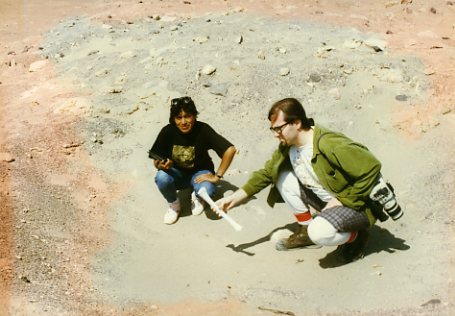

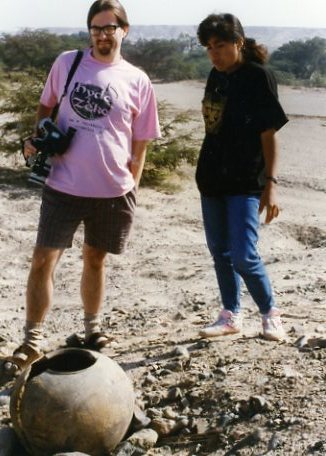
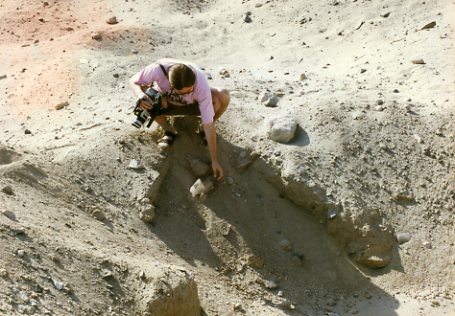
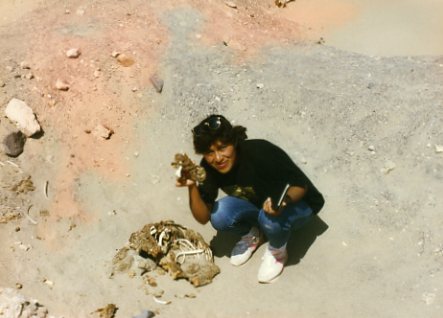
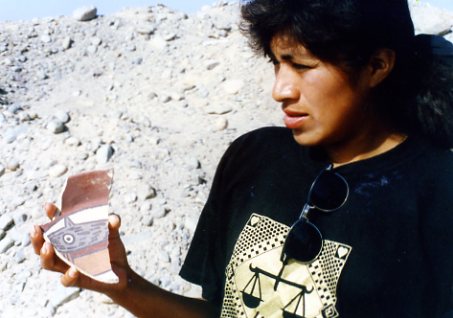

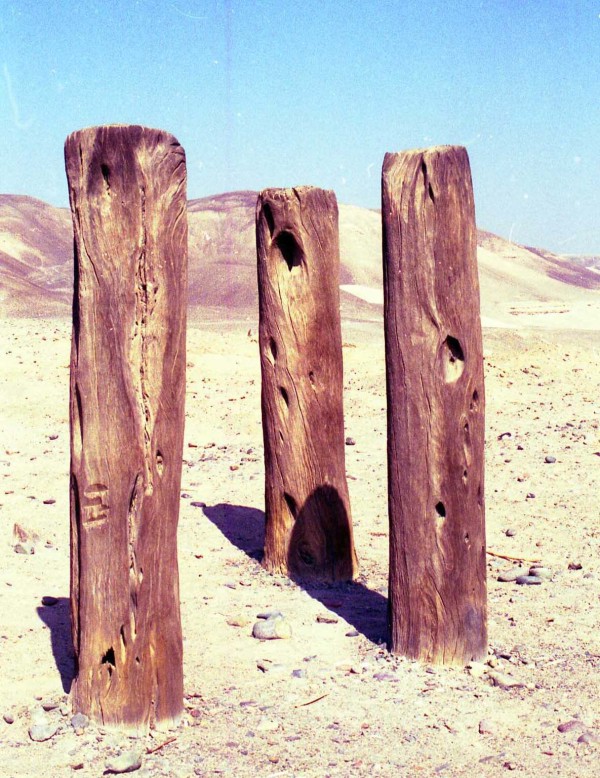
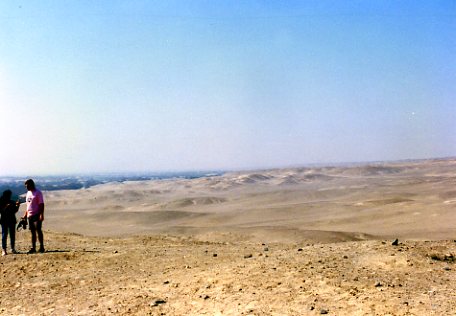

Your trip is horrifying. It makes my hair raise! By the way, I think you had a very educating and fulfilling travel to have witnessed these remains.